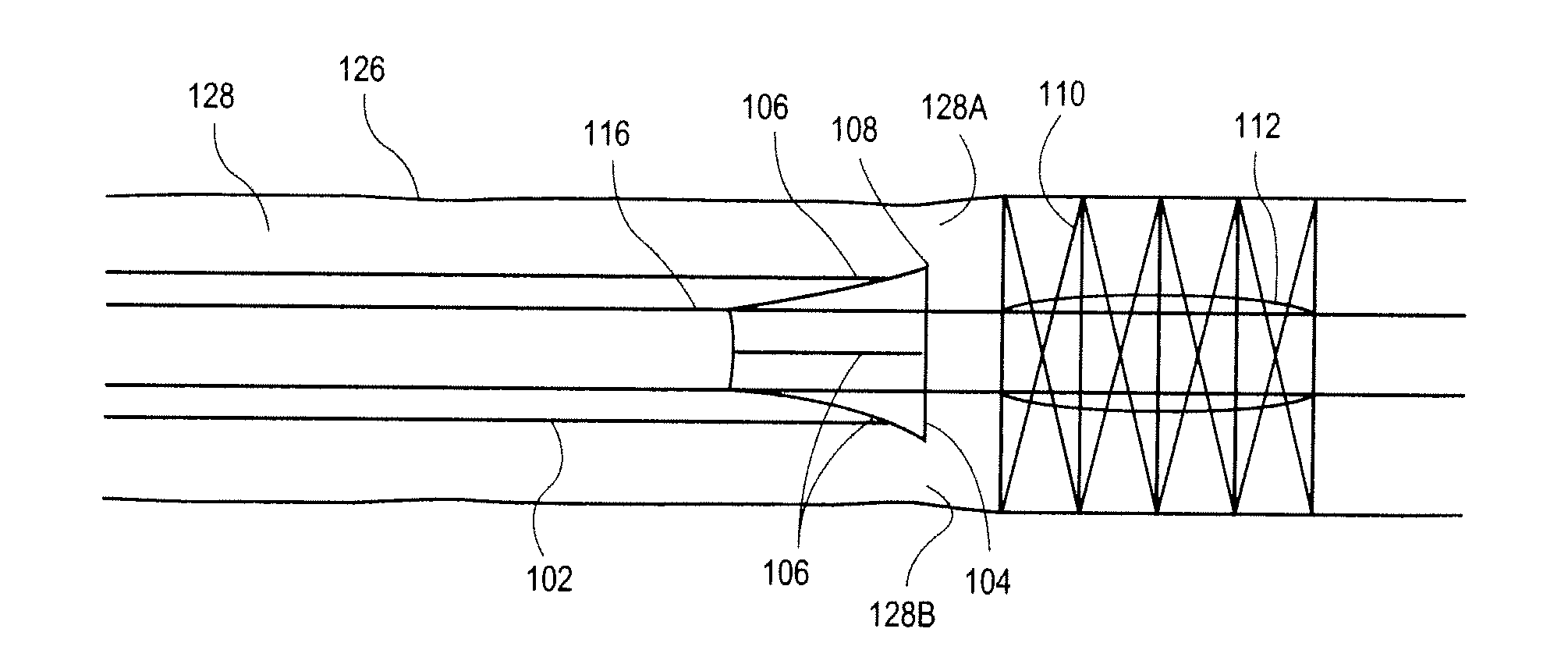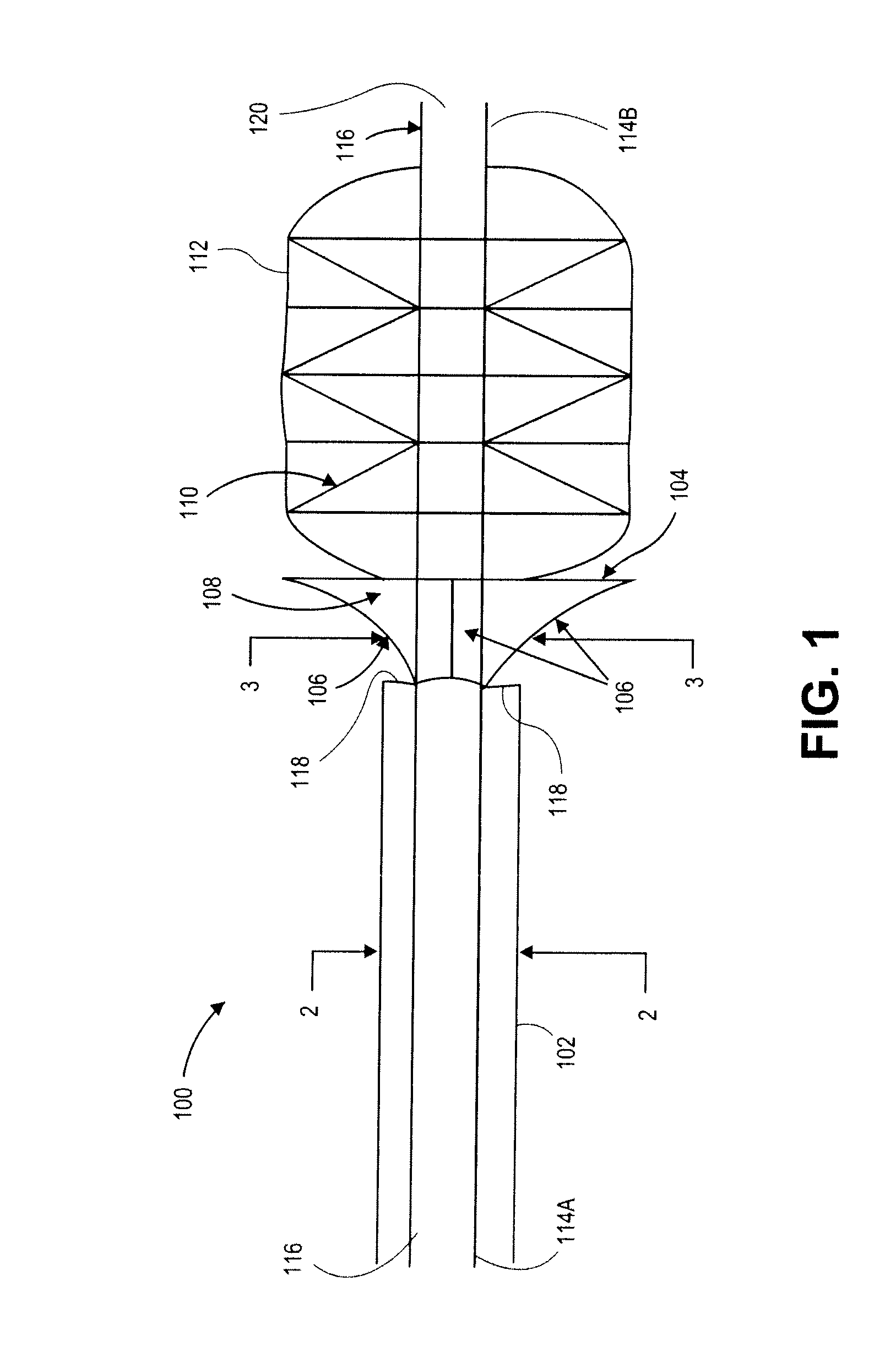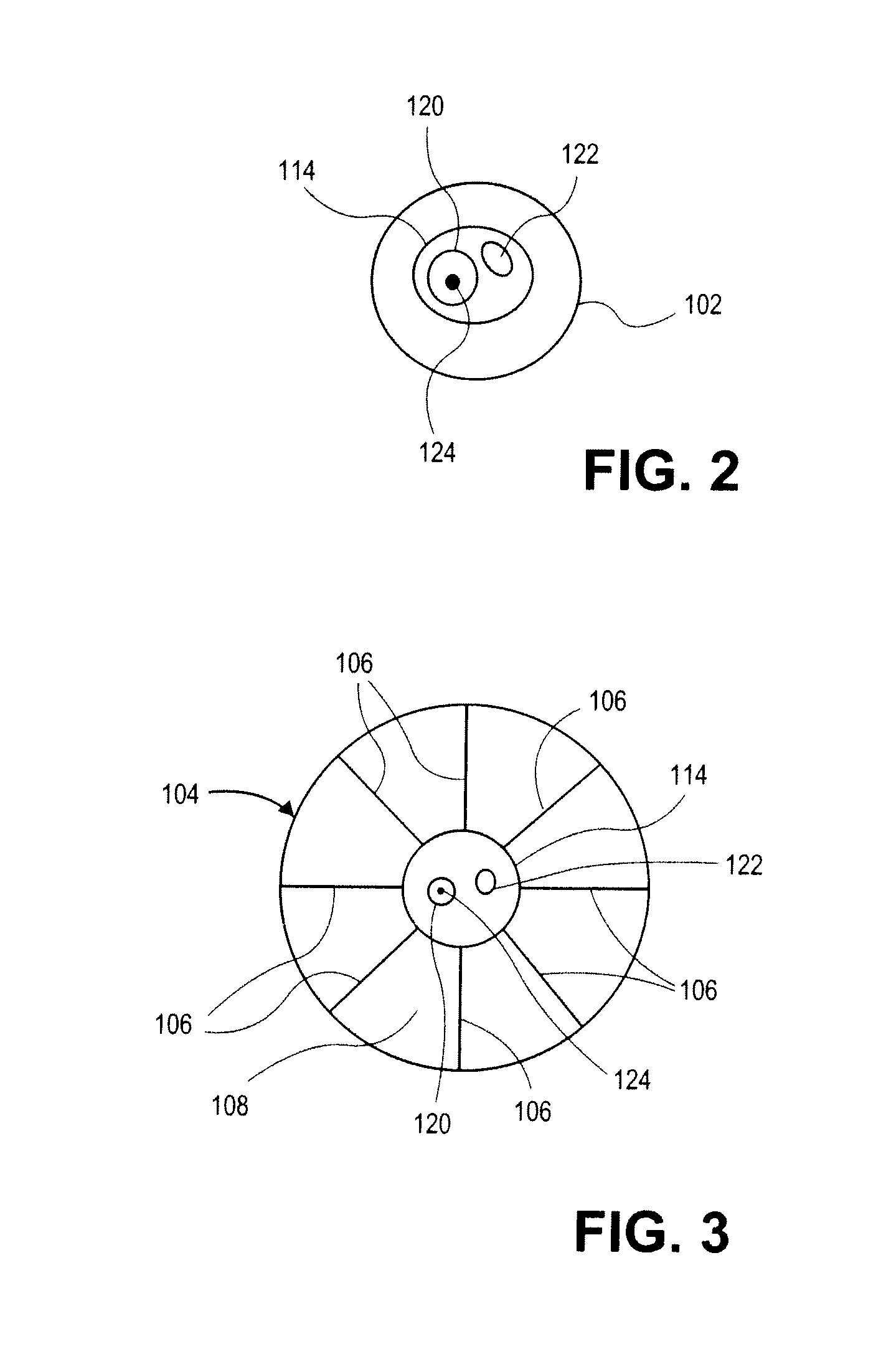Reperfusion injury devices
a technology for reperfusion injury and device, applied in the field of medical devices, can solve the problems of increased morbidity and mortality, tissue at risk of necrosis, and necrosis of potentially salvageable myocardium,
- Summary
- Abstract
- Description
- Claims
- Application Information
AI Technical Summary
Benefits of technology
Problems solved by technology
Method used
Image
Examples
Embodiment Construction
First Reperfusion Catheter
[0050]FIG. 1 is an elevational view of a reperfusion catheter 100, embodying features of the invention, generally comprising an inner member 116 and an outer member 102 that is slidably disposed relative to the inner member 116. In one embodiment, catheter 100 is capable of being delivered over a guidewire through the patient's anatomy. In one embodiment, catheter 100 is a Percutaneous Transluminal Coronary Angioplasty (PTCA) catheter having an inflatable balloon and crimped stent at distal end 114E on inner member 116 and a blood controlling mechanism that can be either proximal or distal to the stent / balloon assembly. The blood controlling mechanism can be used to control perfusion prior to the re-establishment of full blood flow. In one embodiment, blood controlling mechanism includes an expandable valve 104, which is described in greater detail below. In most embodiments of this catheter and other catheters described herein, blood is the fluid being use...
PUM
 Login to View More
Login to View More Abstract
Description
Claims
Application Information
 Login to View More
Login to View More - R&D
- Intellectual Property
- Life Sciences
- Materials
- Tech Scout
- Unparalleled Data Quality
- Higher Quality Content
- 60% Fewer Hallucinations
Browse by: Latest US Patents, China's latest patents, Technical Efficacy Thesaurus, Application Domain, Technology Topic, Popular Technical Reports.
© 2025 PatSnap. All rights reserved.Legal|Privacy policy|Modern Slavery Act Transparency Statement|Sitemap|About US| Contact US: help@patsnap.com



